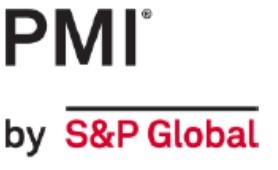The global Purchasing Managers’ Index (PMI) data released this week (compiled by J P Morgan using the data from S&P Global) showed a sharp (for this aggregate) drop, falling to a 28-month low of 48.8. The summary report indicates that output declined in all three sub-sectors but was largest amongst the intermediate goods producers, with relatively mild declines for makers of consumer and investment goods.
For the UK, there was a marginal improvement in the PMI reading but at 46.5 it remains firmly in negative territory. Output, new orders and employment all fell, with the intermediate goods sub-sector especially weak, although business was still down for both consumer and investment goods. The is the 4th consecutive month below the crucial 50 mark and one of the lowest readings for 14 years. With business levels falling, the rate of increase in stocks of finished goods accelerated at the fastest pace for 43 months.
For the Euro-zone as a whole (based on data for 8 countries that have a PMI survey and which are estimated to account for 90% of manufacturing in the Euro-zone), the pace of decline eased a little with the overall manufacturing PMI coming in at 47.1 (46.4 in October). Driving this were less aggressive declines in both output and orders which were especially severe in October; however, with orders still falling faster than output, the outlook remains poor for the next few months.
By country, the most notable change from the October survey is that Ireland, which had been the only Euro-zone country with a PMI above 50, saw a sharp reduction which meant that all 8 countries were indicating a contraction in manufacturing activity. However, the slightly better news is that apart from Ireland and Netherlands where the PMI fell and Austria where it was unchanged, the other 5 countries all saw a less negative reading than in October.
Elsewhere in the European Union (EU), Poland saw a modest improvement in its PMI although only to 43.4 and Sweden (45.8) recorded a lower reading, while there was a very slight fall for the Czech Republic to 41.6 which, along with Taiwan, is the lowest among the countries that we monitor. The manufacturing PMI for Hungary slipped back but, at 54.7, remains among the few positive readings this month.
For the non-EU countries, Turkey (45.7) saw a further decline in its already negative reading with Switzerland (53.9) recording a lower but still positive PMI. The most significant increase among the countries that we monitor came in Russia (53.2) which consolidated its already positive PMI with a rise of 2.5 points.
In Asia, China, Korea and Taiwan all saw small improvements to negative readings but not enough to change the sign. This did, however, happen in Japan, although this was a case of going from positive to negative with the reading of 49.0 being the first sub-50 outcome since January 2021. The ASEAN region saw its PMI slip closer to the tipping point at 50.7, but the “Star of the East” continues to be India which saw its PMI edge up to 55.7, the highest of the countries/regions that we monitor.
That just leaves the Americas were we have different outcomes. The most notable were a large reduction in the PMI for both the USA and Brazil – the latter the largest decline in November in this report – which meant that both countries had a reading below 50. Canada saw a small improvement but their PMI remains below 50 while a small increase in Mexico helped them to improve their already “just) positive reading.
The S&P Global PMI reports for major economies around the world are available from their website at https://www.pmi.spglobal.com/Public/Release/PressReleases and our summary charts report is available to download below. You should note however, that the PMI readings for Hungary, Sweden and Switzerland are compiled independently and not on this site but they can be found with an appropriate internet search.

